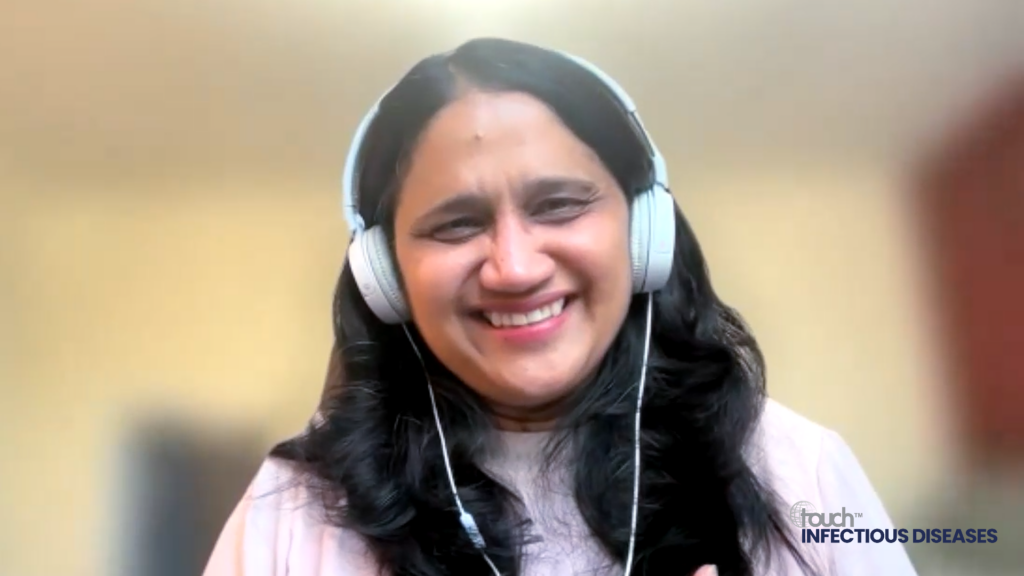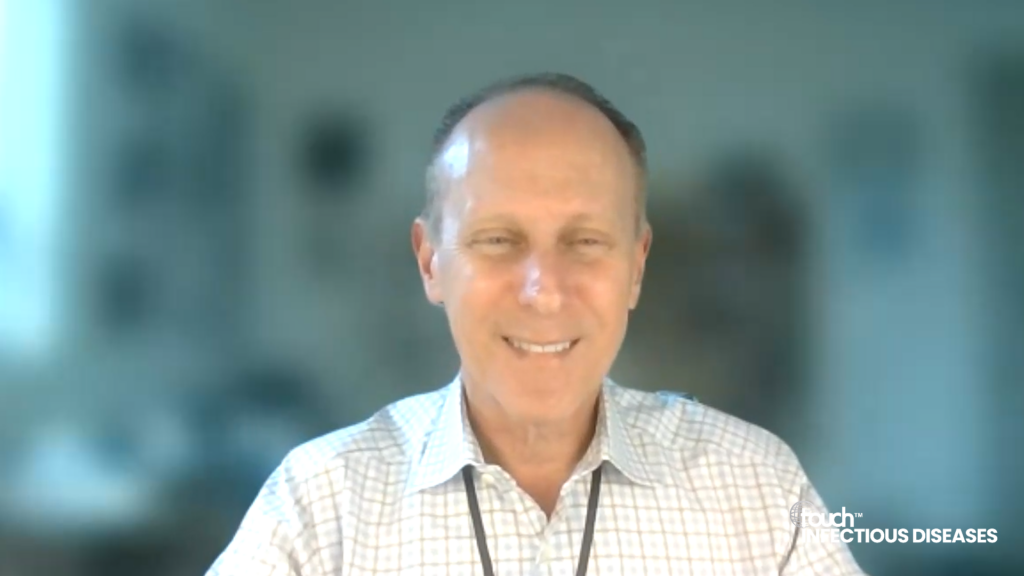Dr Sarah Fidler (Professor of Medicine, Imperial College London, UK) discusses the limitations of current antiretroviral therapy (ART) for HIV, noting its lifelong daily use, challenges with adherence and persistent global treatment gaps. She highlights the promise of broadly neutralising antibodies (bNAbs), which differ from ART by targeting HIV-infected cells and potentially reducing the hidden viral reservoir. bNAbs also engage the immune system’s memory response, aiming for longer-lasting control of HIV without daily medication. This approach reflects a broader research effort to develop more sustainable, less burdensome strategies for managing HIV infection globally.
Q1. What are the current challenges and limitations of antiretroviral therapy (ART) for patients living with HIV, and what unmet needs remain? (1:00)
Q2. How do broadly neutralising antibodies (bNAbs) differ from traditional ART in their approach to HIV control? (4:07)
Catch up: RIO phase II study reveals promise for broadly neutralising antibodies in achieving HIV remission without daily antiretroviral therapy
Transcript:
My name is Sarah Fidler. I’m a clinician and an academic, so that means I trained as a doctor, and I also do academic research as part of the university, including clinical trials where we test new types of treatments. I work at Imperial College in London and Imperial College NHS Trust, so that’s a national health service hospital. I’m a professor in HIV medicine and work in department of infectious diseases.
So I have looked after people living with HIV for about the last 25 years, in the capacity as a clinical doctor, and then have spent a lot of my career working, looking at different types of either strategies or novel treatments to get better at treating, the HIV infection.
Q1. What are the current challenges and limitations of antiretroviral therapy for patients living with HIV, and what unmet needs remain?
So HIV is a virus that lives in blood. It’s passed on through sex, blood transfusions and parents to their children through delivery, pregnancy and breastfeeding. The treatment we now have to treat HIV, as well as to prevent transmission of HIV, is called antiretroviral therapy (ART). And these are small molecule drugs that, in combination of usually three (but sometimes two) different types of medicines block the replication – so block the virus dividing. That means if people take their medication, the levels of virus that we can measure in their blood become what we call undetectable. Now that means that there’s no more virus particles growing in the blood or in the body, but it doesn’t mean that they are cured because this virus is able to hide away or ‘sleep’ in certain cells of the body that can then wake up again if the medication is stopped.
So what that means for people living with HIV all over the world is they need to take these medicines every single day and for the rest of their lives, which is an enormous challenge for an individual person. It means if you go on holiday, your birthday, Christmas, etc, there is no day where you can’t you can manage without your medication. We have new injectable versions of some of these medicines, but still, people have to attend every other month to have these injections, which need to be given by, somebody from a medically trained team.
So we spent quite a lot of time looking at better ways that we might be able to deliver control of the virus without actually needing to adhere to medication every single day, and certainly for the rest of people’s lives. I think it definitely is not that we don’t want to keep using ART, but you can see the challenges for the individual person living with HIV and their families, but also for healthcare systems and for funders and departments of health. This is an enormous challenge. And there are, at the moment, 40 million people in the world living with HIV who need lifelong therapy.
And even despite all the amazing ways that we have got better globally at delivering treatment for people all over the world, there’s still 1/4 of the people living with HIV who are not on treatment, who don’t have access to treatment or maybe don’t know their status, and, there’s over 1 million new infections every year. So we definitely need to do something better than this, and that was kind of the inspiration behind a lot of the research, not just by me, but by many groups to look at alternative strategies that might allow people to live a healthy life, remove the risk of passing on the virus to partners and their infants, and yet not need this burden of taking some form of medication every day.
Q2. How do broadly neutralising antibodies (bNAbs) differ from traditional antiretroviral therapy (ART) in their approach to HIV control?
So broadly neutralizing antibodies, which is a bit of a mouthful, sometimes we call them (bNAbs) just for an easier way of saying it, are a completely different type of treatment. The ART we talked about is a medication that actually blocks certain enzymes within the virus that stops it growing, if you like, or replicating.
We’ve used antibodies against infectious diseases for actually over 100 years. We’ve known that these antibodies work, and that they’re proteins that our bodies make all the time any time we see a foreign virus bacteria, and that’s one of the ways our bodies clears infections. And what we are using here is antibodies that have been generated in a factory, if you like. And they particularly target the virus and cells that express the HIV virus, and they remove them. So not only do they control the virus from growing or replicating, but they, we hope, seem to be able to seek out these cells that we’re are a little bit more difficult for us to clear, which we call the HIV reservoir. Those cells have got virus inside of them, but they’re kind of asleep.
And the beauty of harnessing our own immune system is that we can then generate what’s called memory. So immune memory means that once you’ve had chickenpox once, you don’t catch it again. And that’s because our immune system has seen that virus and it remembers that if it ever sees those cells become active again, it will remove them. And so it’s harnessing the immune system to try and teach our own immune system, if you like, to control the virus all by itself.
Interviewer/Editor: Sophie Nickelson
Disclosures: Sarah Fidler has no financial or non-financial conflicts of interest to declare in relation to this video.
This content has been developed independently by Touch Medical Media for touchINFECTIOUS DISEASES and is not affiliated with the Conference of Retroviruses and Opportunistic Infections (CROI). Unapproved products or unapproved uses of approved products may be discussed by the faculty; these situations may reflect the approval status in one or more jurisdictions. No endorsement of unapproved products or unapproved uses is either made or implied by mention of these products or uses by Touch Medical Media or any sponsor. Views expressed are the speaker’s own and do not necessarily reflect the views of Touch Medical Media.
Cite: A new chapter in HIV research: Dr Sarah Fidler on the promise of harnessing immunity with broadly neutralising antibodies. touchINFECTIOUSDISEASES. May 20th, 2024.
SIGN UP to touchINFECTIOUS DISEASES!
Join our global community today for access to thousands of peer-reviewed articles, expert insights, and learn-on-the-go education across 150+ specialties, plus concise email updates and newsletters so you never miss out.









